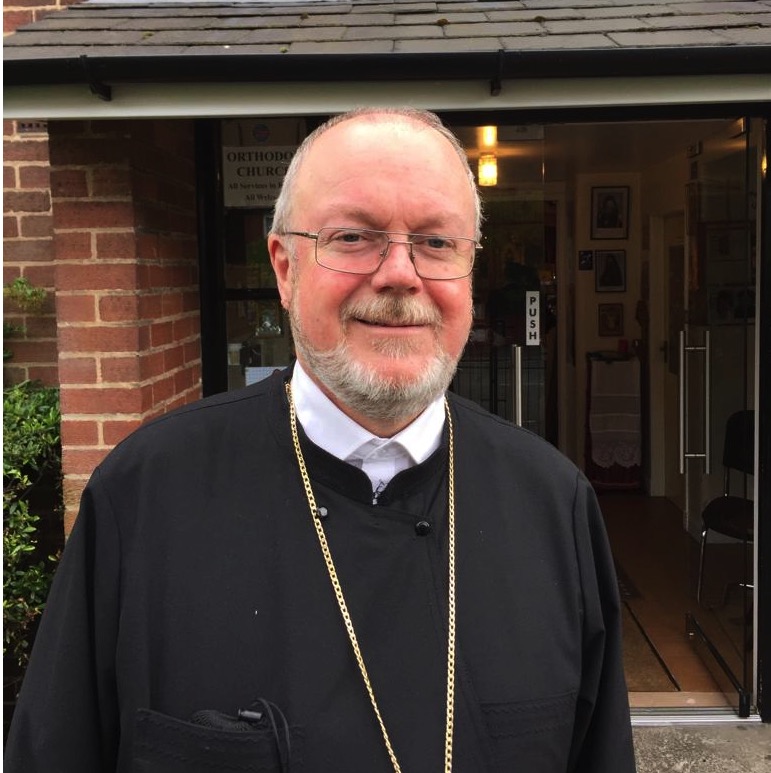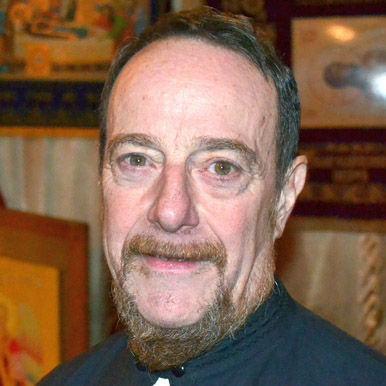When the Myrrh-bearing Women came to the tomb on the morning of Pascha with spices to complete the embalming process they had no reason to expect anything unusual. They were simply conforming to the burial customs of the time. Jesus whilst alive had taught that the fall of the Temple in Jerusalem would be followed by a raising up 3 days hence but at that time Christ’s followers had not really understood that he was referring to the temple of his own body.
Imagine therefore the shock when the women got to the tomb and found it empty. They might have concluded that someone had stolen or simply removed the body; indeed in the Gospel of St. John, this is Mary Magdalene’s reaction when telling St. Peter and again unknowingly when she meets the Risen Christ Himself in the garden. The sequence of events in respect of the women is less clear in the Gospel of St. Luke but the issues surrounding the empty tomb are much the same. Later the authorities will indeed accuse the disciples for stealing the body in order to stage, fraudulently they allege, a resurrection from the dead.
What matters to us in all these accounts is the message the angel gives to the women, placing beyond all reasonable doubt the truth of the resurrection. “He is not here but is risen.” Doubtless this message, if it had come to the ears of the sceptical and antagonistic authorities would not have impressed them. Subsequent history confirmed the women’s testimony … the body never was found. This is vitally significant, for if the resurrection hadn’t happened and the body had still existed then the disciples certainly would have reverenced the relics and built a shrine. Neither of course happened. The surest confirmation of the resurrection, however, was not and is not the mere absence of a body, the empty tomb, but rather the presence of a Living Person, Christ Himself. Our Lord is not to be found amongst the dead … “He is not here,” but rather among the living, among any who will receive Him.
Children, you can now help me. How can we receive the Lord Jesus Christ into our lives. What do we have to do? ....
…. So we have now established that the Risen Christ reigns in the hearts and lives of all those who make room for Him by dying to themselves and living in and for God. If we think about this we shall realise that this is what we have done in baptism. We have drowned the old life in the waters of baptism and then we have been raised up in Christ in this sacramental foretaste of the resurrection, clothed in white, the glory of God.
If like Gabriel, christened here today, we have been baptised as a baby, then the spiritual power of baptism will only become evident to us later as we grow up in the Church. For all of us, however, young and old alike, living in Christ always involves a death and a new birth. This is something that not only God does but also something that only we can make possible by our personal choice to follow Christ and surrender of our lives to Him.
When we make that choice the angels message “He is not here” … that is among the dead in the tombs … applies to us as well. We are no longer in the place of the dead, we are rather raised in Him to newness of life. This then is the real test of resurrection, the true Pascha, our transformation in and by the Risen Christ.
The personal narrative of our encounter with the Risen Lord can also invite others to the same saving work of Christ, if we tell the story and tell it well both in word and deed. We should always be ready to give a good account of the hope that is in us, no less that Christ Himself in us, the hope of glory. The Mission of the Church always derives its strength and power from the resurrection. As St. Augustine acclaimed: “We are an Easter people and ‘Alleluia!’ is our song.”

 Archpriest Gregory Hallam
Archpriest Gregory Hallam
 Fr. Emmanuel Kahn
Fr. Emmanuel Kahn